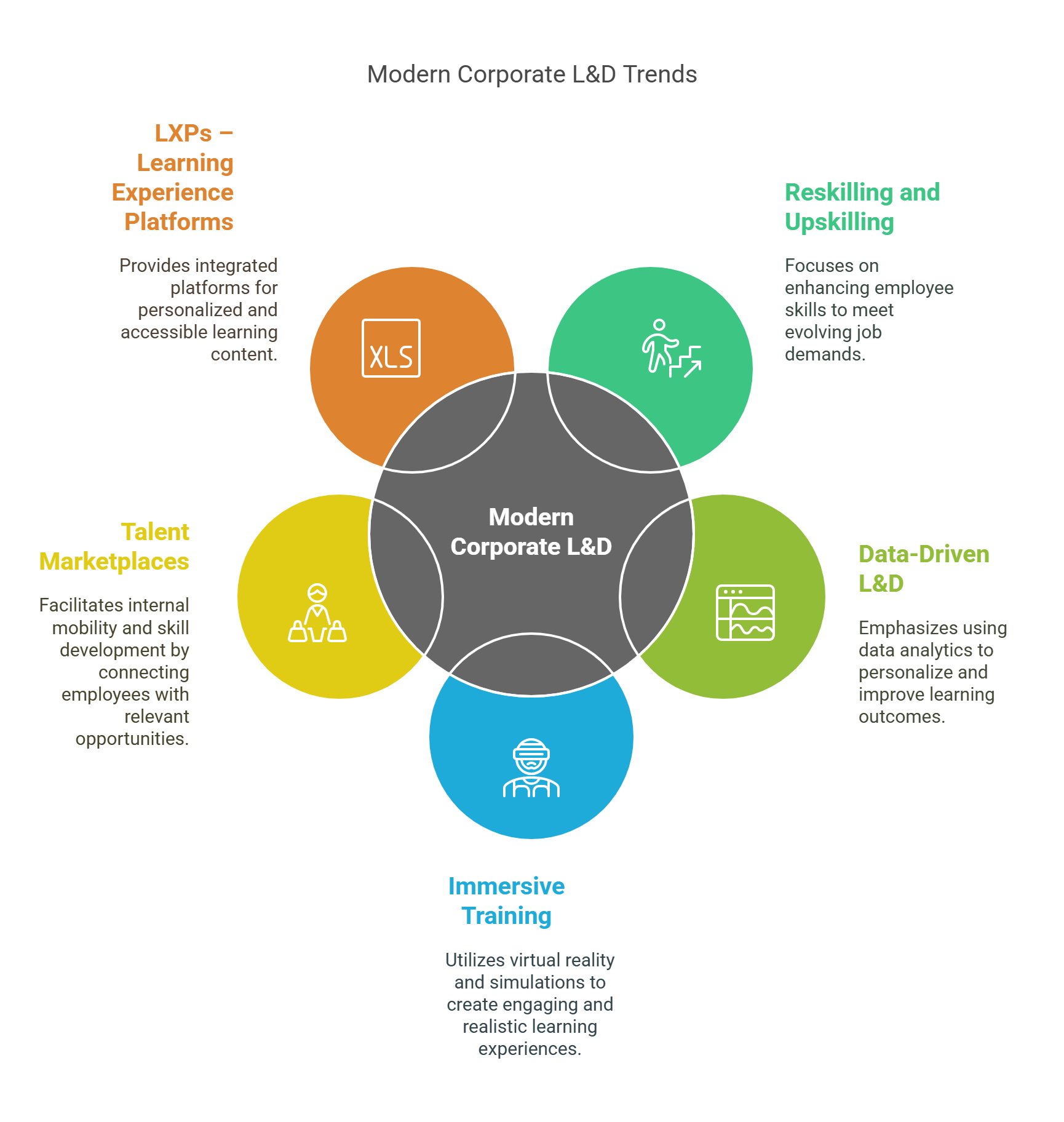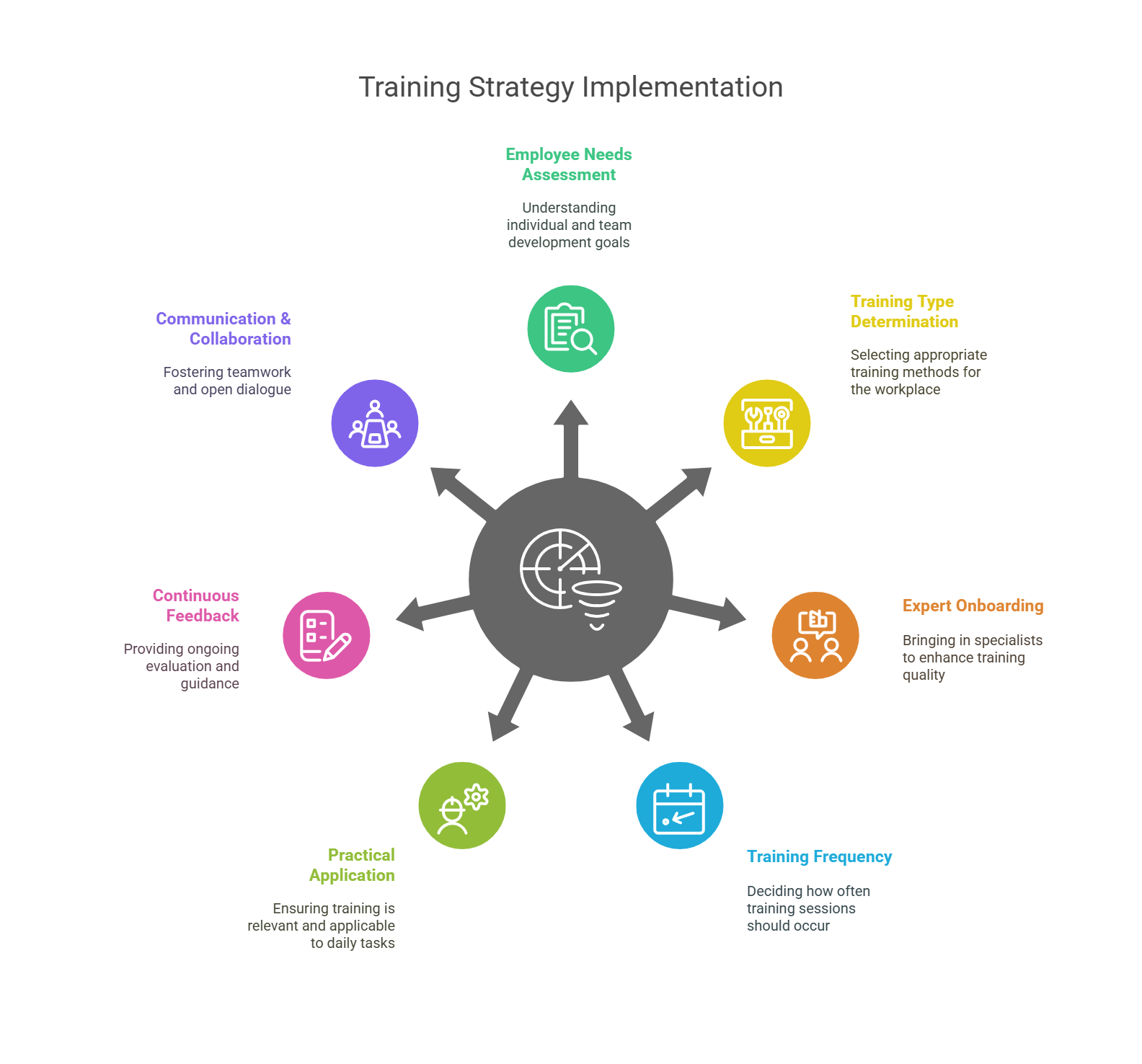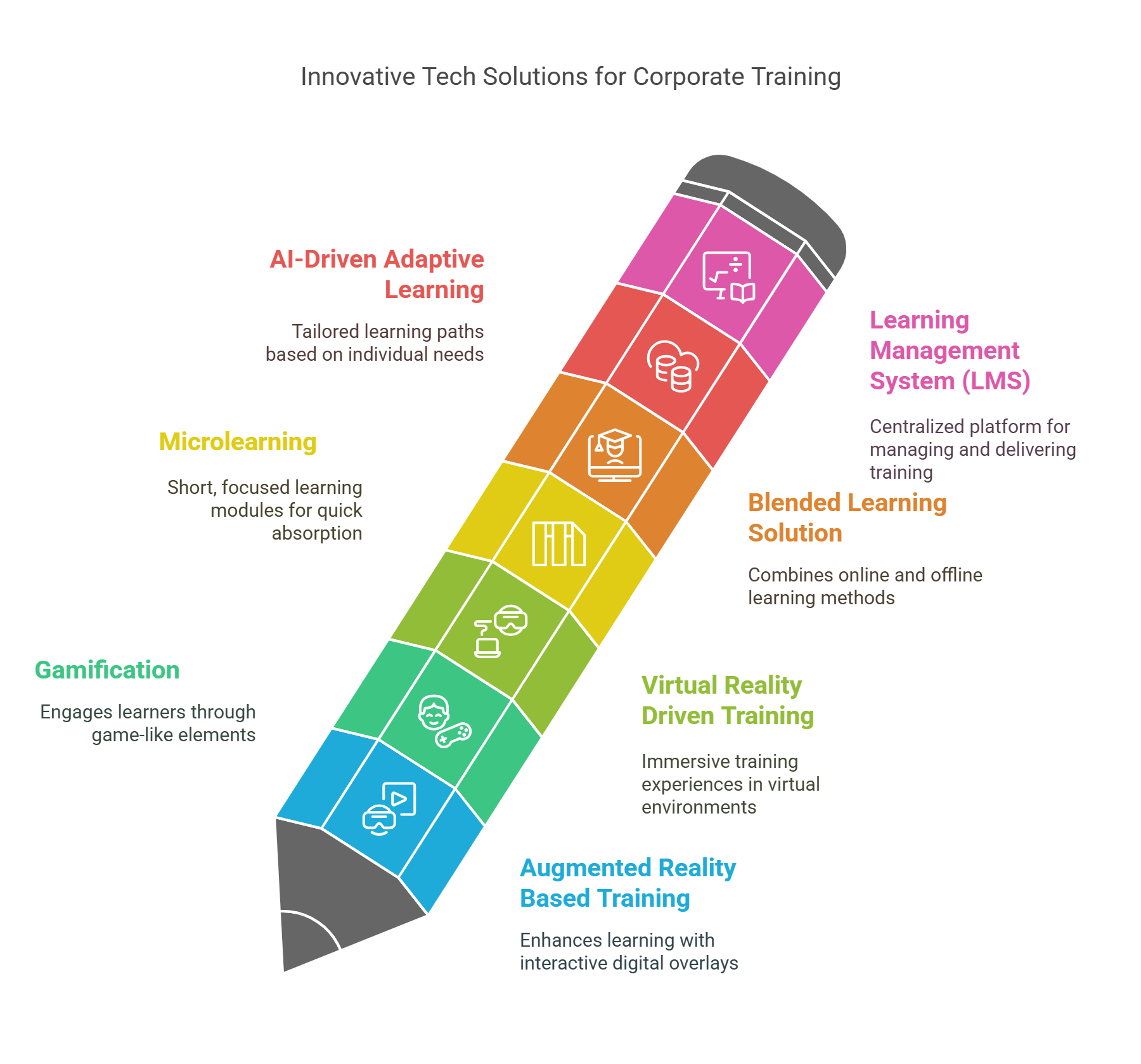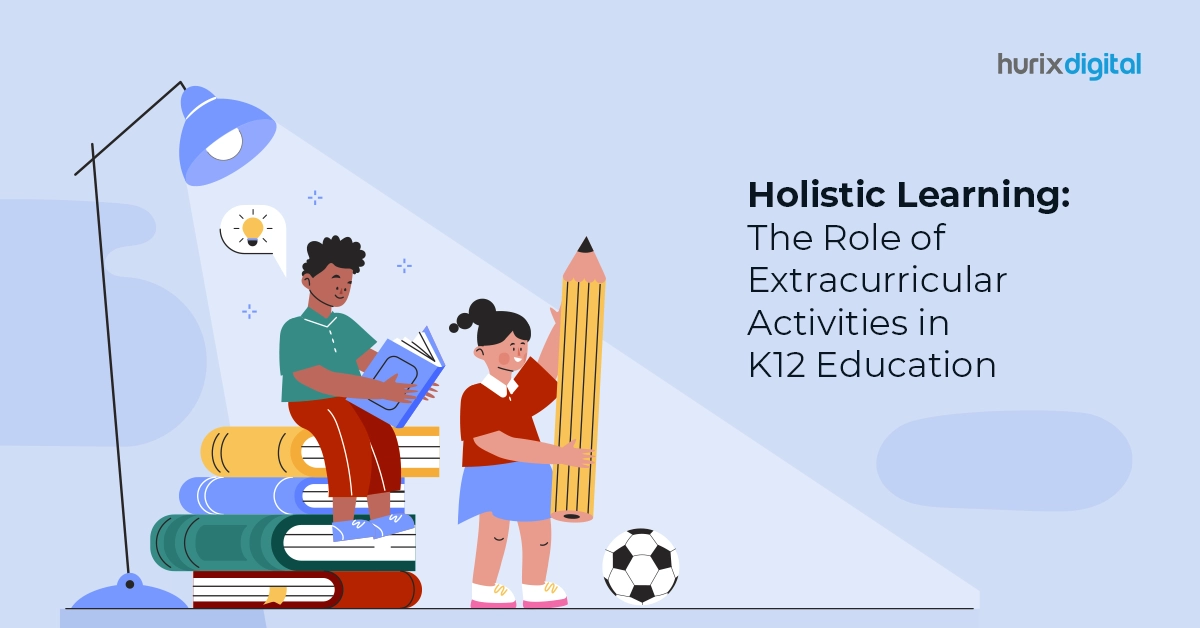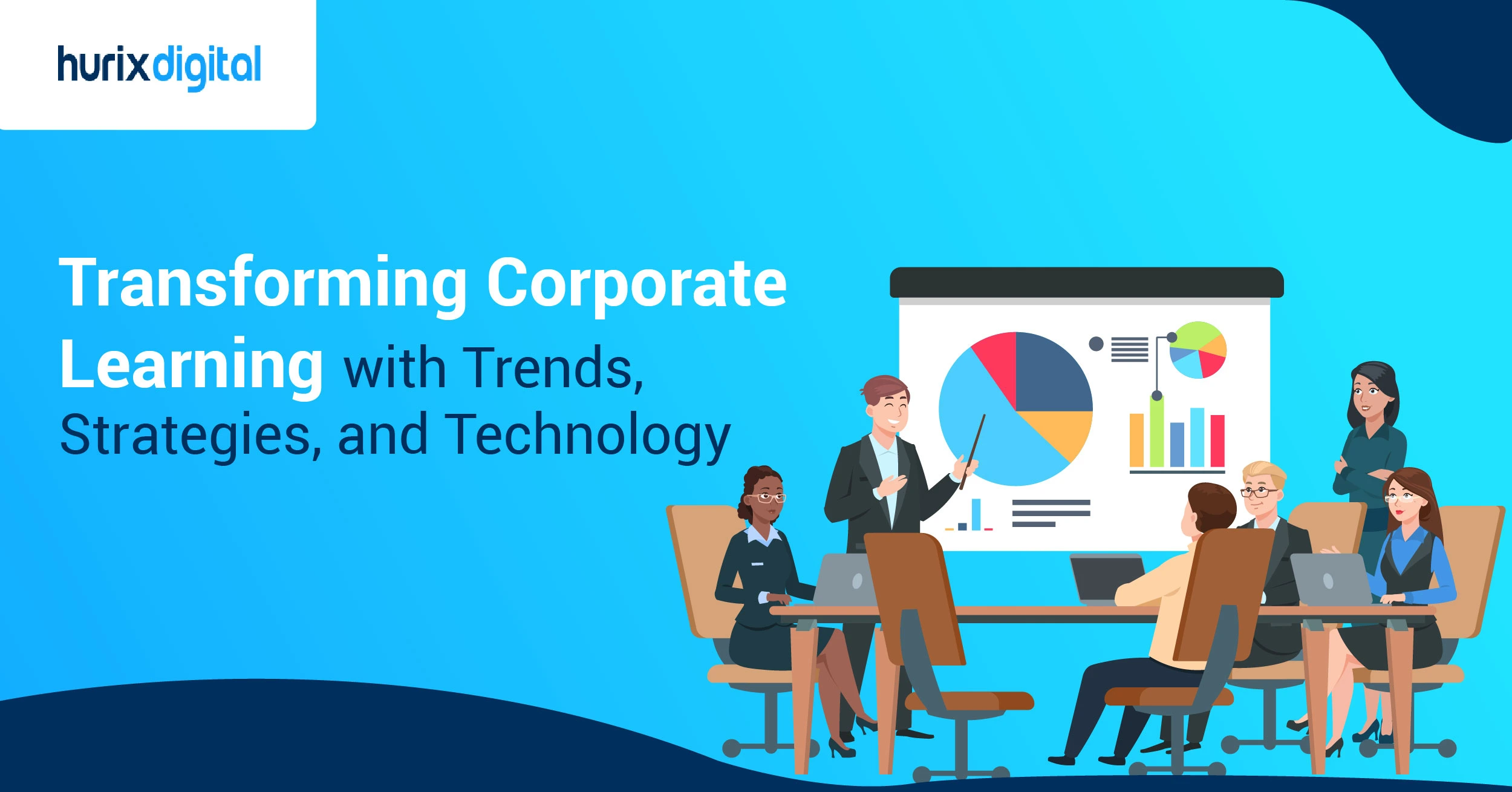
Transforming Corporate Learning with Trends, Strategies, and Technology
Summarize with:
The impact of engaging corporate learning solutions is often underestimated in the corporate market. Statistics reveal that employees spend only 1% of their workweek on workplace training and development. This limited time allocation, despite the evolving L&D trends, discourages employees from investing in skill enhancement and continuous learning. As modern learning and development strategies shift toward more flexible and immersive formats, addressing this time constraint has become more critical than ever.
The marketplace constantly evolves with the rapid development of digital tools and technologies. Consequently, the skills required to do a job are also changing. Professionals need to stay current in the field and nurture new expertise to grow in their careers.
Effective corporate training is vital for any organization. It enhances employees’ skill enrichment and overall engagement, performance, and job satisfaction.
The emergence of cutting-edge tech solutions facilitates the imparting of relevant and effective training in a more immersive manner. This promotes employees’ confidence in their skills, enabling them to contribute meaningfully to the organization’s growth.
Table of Contents:
- Five Trends Worth Considering in Modern Corporate L&D
- Top Seven Strategies & Practices While Creating and Implementing Training Methods:
- 7 Most Effective Tech Solutions For Corporate Training
- What are the Advantages of Impactful Workplace Courses?
- A Few Aspects to Consider
- Closing Thoughts
Five Trends Worth Considering in Modern Corporate L&D
Considering the rapidly changing dynamics of the business world, it is essential to empower employees with the necessary tools and skills to enable them to survive and thrive. This is where workplace training makes its importance known.
For corporate education to be effective in helping employees achieve their goals, it is important to understand and implement corporate L&D trends within the organization.
Five key trends are truly transforming the way companies are training the workforce:
1. Reskilling and Upskilling
The rise of technology has also caused a rapid change in the business world across all aspects, and as a result, the skill gaps are widening.
Keeping that in mind, the L&D trends today focus more on helping employees gain peripheral skills associated with the ones they already have and upskilling to help them learn new skills.
This not only helps the employees stay relevant in their line of work but also seeks out new and better opportunities to flourish over time, even if the situations are adverse.
Reskilling and upskilling also help employees with internal hiring for different roles.
2. Data-Driven L&D
With the emergence of artificial intelligence and machine learning, the corporate learning and development industry has quickly adopted a more data-driven approach.
AI has the power to provide in-depth analyses to the learners and trainers, helping them visualize their progress in a better manner and plan further steps.
Machine learning augments AI-based L&D modules with detailed insight into historical performance, areas for improvement, and possible recommendations for better outcomes from skill applications.
AI and ML are now providing corporate learners with customized, more meaningful career development paths than traditional methods could ever make possible.
3. Immersive Training
Augmented and virtual reality are now paving the way forward for workforce training. Especially in soft skills areas, organizations are leveraging virtual learning modules that present their employees with scenario-based training.
This is especially being applied to the customer service industry, where soft skills and patience are extremely important. For example, virtual reality-based training sessions generate a hypothetical scenario where the trainee is supposed to navigate with their existing skill set.
The assessment and feedback then provide a detailed breakdown of the candidate’s performance, also indicating where and how the candidate can improve to turn the situation into a favorable one.
4. Talent Marketplaces
One of the leading trends in training programs is the talent marketplace. This concept is similar to that of eCommerce platforms.
The difference is that a talent marketplace connects employees to relevant resources, knowledge, training, and opportunities that help them improve their mobility.
These marketplaces encourage a fluid working environment and foster an agile, resilient company culture. The training available on talent marketplaces is completely voluntary. Employees can align their choices with their chosen career paths and grow within their organization.
Talent marketplaces are especially helpful for the section of the workforce that seeks internal mobility without having to wait for opportunities—they can create their own.
5. LXPs – Learning Experience Platforms
Whether or not a workplace learning initiative is successful ultimately hinges on how effectively an employee can apply the learnings to their work.
Therefore, today’s trends focus more on delivering impactful learning experiences for employees rather than completely on the subject matter and its exhaustiveness.
Personalization of learning and customizing lesson delivery have become pivotal today in giving power to employees.
They can now access corporate learning and development programs according to their terms, enhancing the overall experience, improving engagement, and helping them retain more from a course than traditional methods.
Organizations are attempting to make the entire training lifecycle – right from onboarding to final steps – completely employee-centric.
Top Seven Strategies & Practices While Creating and Implementing Training Methods:
1. Keep Assessing Employee Needs and Developmental Goals
The first and most important step while implementing a corporate learning solution is determining the needs of your employees. The training must align with the employees’ short-term and long-term goals.
Suppose the needs of the employees are not met. In that case, the organization may find it difficult to retain and attract top talent. It is also crucial to reassess the employees’ needs regularly to continue providing them with a productive and engaging work environment.
If the employees feel well respected and supported, it will automatically foster a positive work environment.
2. Determine the Type of Workplace Training
Surveys reveal that 87% of employees prefer working from home if given a chance. Consequently, it has become very important to determine the training mode while creating and implementing employee learning and development training.
Some major types of workplace training you can consider are online webinars, self-paced modules, workshops, virtual or physical conferences, external resource training, and skill-based training. It is also recommended that you ask your employees about their preferences before making a final decision.
3. Get Some Experts Onboard
If you do not have the expertise to assemble comprehensive and productive training programs, hire some training experts and corporate training consultants. Experts will not only help you identify the necessary competencies, but they will also assist you in creating engaging content.
Some other areas experts can help you with are measuring training results, integrating technology into learning & development, team communication & collaboration, and much more.
4. The Frequency of the Training
Corporate training should not be a rare event and must take place at frequent intervals. Regularity will help you and your employees keep pace with the constantly changing and evolving market L&D trends.
Additionally, with the necessary support and guidance, your employees won’t feel the need to seek external resources for their learning requirements.
Below are some elements you can keep in mind while deciding the frequency and timeline of the training:
- Skill enhancement needs of the employees
- Existing knowledge gaps
- Newer Recruits
- Compliance and regulatory requirements
- Performance improvement
- Resource and budget allocation
- Availability of experts/trainer
5. Practical Application and Relevance
Relevance of learning and development training with real-life scenarios will allow employees to bridge the gap between theory and practical application. Often, employees learn new skills but do not have adequate knowledge of how to use them practically to enhance productivity and the final output.
To facilitate a better transfer of learning, each training module should be relevant to real situations and must be followed by practical application practice. This will also increase the retention and engagement of the employees, as they will be able to gather more meaning from the training activities.
6. Offer Continuous Feedback and Assessment
One way to reinforce learning and identify areas of improvement is by offering continuous improvement and assessment opportunities. This way, employees could focus on areas that need more attention to enhance their skills for career progression.
Positive feedback will also motivate employees to engage in workplace training activities enthusiastically. Employee feedback assessment will also allow you to recognize course areas that need correcting and enhancement.
You can identify areas where most of the employees are struggling and make necessary adjustments. This iterative approach will need close observation to ensure the training programs remain relevant and impactful.
7. Communication and Collaboration Opportunities
Remember to add numerous group work and collaborative activities in the employee training and development modules. This will not only promote knowledge and problem-sharing but will also foster a collaborative workspace.
Employees should feel comfortable seeking the help of their colleagues in challenging or stressful situations. Networking and collaboration during training programs can go a long way in creating a dynamic employee development environment.
About 95% of working professionals believe that networks can prove to be highly beneficial for long-term business.
Some more benefits of communication and collaboration are a positive sense of community, relationship building, continuous learning, knowledge sharing, enhancement of interpersonal skills, innovative problem solving, and much more.
7 Most Effective Tech Solutions For Corporate Training
Corporate training is becoming more technologically dynamic due to the availability of cutting-edge solutions that have given a facelift to conventional learning methodologies. The 7 most effective tech solutions for training have been dwelt over below.
1. Augmented Reality Based Training
Augmented Reality (AR)- driven corporate training offers a rich, contextualized learning experience by blending real-world organizational elements with 3D graphics, virtual effects, and photorealistic elements. Learners can immersively engage with virtual objects in real-time.
Boeing, the renowned aircraft manufacturer, leverages AR to train technicians on the complexities of airplane wiring layouts. This has led to a 40% productivity improvement and a 25% reduction in delays.
From the perspective of product training, AR is very effective as employees can explore different specifications and features of new and complex products in a virtual space. Corporate leaders can be empowered to manage real-life challenges more efficiently through AR simulations and exercises related to team management and decision-making.
2. Gamification
Gamification intends to make corporate training more engaging and outcome-oriented by innovatively incorporating game elements and principles into training modules. Complex concepts can be presented through games that motivate learners to explore the intricacies of the concept through self-exploration in a fun way.
The conventional training experience is transformed significantly through interactive and immersive game elements like challenges, badges, points, rewards, leaderboards, etc. Any employee feels inspired by the thought of getting rewarded. This psychological principle underlies this training solution that takes drabness away from the skill acquisition process.
Interestingly, Harvard Business School conducted a study with KPMG’s workforce to analyze gamification’s impact on training efficacy. The research revealed that KPMG’s core business outcomes in terms of acquiring new clients, securing better business opportunities, and fee collection improved by 16%, 22%, and 25%, respectively, for offices whose staff participated in gamified training.
Gamification gives learners more choices and better control over the skill enrichment journey. This increases their intrinsic motivation, which heightens their commitment to learning.
3. Virtual Reality Driven Training
Virtual Reality (VR) is playing a key role in corporate training. VR eliminates the requirement that trainees imagine a complex situation, as realistic simulations serve to enliven the imagination.
Meta headsets allow trainees to experience a situation in the virtual world as if it were happening in real life. Employees can gain insights from the mistakes committed in the virtual space and develop skills to navigate past them in the workplace.
The experience becomes immersive as the risks of the organizational workplace can be confronted from different angles in a virtual place. This implies that the employee can learn vital strategies to combat work challenges most safely and efficiently without being hassled. VR training is helpful in technical cases where mistakes can be made easily during learning, and those mistakes can be costly.
4. Microlearning
Microlearning is an impactful technological intervention for corporate training. It engages learners better, improves knowledge retention, makes learning self-paced, and effectively addresses specific development needs. By catering to learners’ smaller attention spans through immersive and small knowledge units, it facilitates prompt assimilation of information for ease of application in relevant business cases.
The modules are short, usually one to ten minutes, and the aim is to deliver important information succinctly. Training solutions are offered through animations, microsimulations, infographics, interactive videos, PDFs with rich media, etc. Assessments are designed to provide customized recommendations of microlearning content with feedback for identified learning gaps.
Analytics can be deployed concurrently with content to accurately map learners’ performance and progress. The provision of mobile learning takes learner engagement and flexibility to the next level.
5. Blended Learning Solution
Hybrid, multimodal, or blended learning solutions combine conventional modes of instruction with self-paced online learning through digital resources. This is ideal for corporate training, as employees can acquire knowledge based on their preferences and mapped skill gaps with eLearning modules. Designated instructors can clear any doubts in classroom sessions. This solution optimizes knowledge retention and upskilling.
This learner-centered tech solution features multimedia-rich online courses, interactive assessments, simulations, instant feedback, and peer-to-peer collaboration. Social engagement, teamwork, and collective learning are promoted through online discussion forums and activities shared over video conferencing media. Subject matter experts offer tailored and individualized support.
Analytical tools are leveraged to track employees’ progress, make data-informed decisions, ascertain the depth of understanding, and identify the scope for improvement.
6. AI-Driven Adaptive Learning
Adaptive learning adopts a personalized learning-centric model wherein the corporate knowledge assimilation experience is tailored to the employees’ unique needs. The training is imparted based on learners’ varying perceptions, abilities, and talents. This elimination of homogeneity allows the delivery of bespoke learning courses with different interactive content.
The learners neither feel overwhelmed nor bored as the engagement level of personalized learning is high. Actual intellectual enrichment of employees happens in alignment with organizational goals as they get the needed content at the appropriate time. There is freedom to explore each topic in depth in a self-paced mode. One need not follow a linear course of learning as AI often powers the training trajectory and allows dynamic browsing of topics.
The salient aspects of adaptive learning authoring tools are:
- Provision for minimalist subject-oriented training layout with links to gain more insights on each relevant topic.
- Scope for creating short nano-learning vignettes focusing on individual topics to engage learners and motivate them to delve deeper into subjects that need attention.
- Facilitate the creation of dynamic assessments that ascertain learners’ existing skills and knowledge, present content containing insights into know-how that learners lack, and eventually test their command.
- Allows AI to be leveraged to identify learners’ behavioral patterns and preferences to deliver customized learning experiences with tailored content.
Adaptive learning solutions are ideal for corporate training as bespoke learning plans can be created for the dynamic generation of relevant lessons. The option is to intellectually empower learners by letting them explore important topics in depth. Content generation happens based on learners’ roles and responsibilities.
7. Learning Management System (LMS)
LMS software hosts a central training repository of knowledge modules that employees can subscribe to and complete based on the skill gaps identified in performance management appraisals or for specific skill enrichment. The training flow can be automated to an extent so that trainers are not required to perform manual interventions frequently. Organizations can use the cloud or intranet to host the LMS software.
You can post learning content in video, rich multimedia, or other popular formats. Various difficulty levels can be assigned, allowing trainees to graduate to a higher level once their competencies in previous levels have been sufficiently enriched.
What are the Advantages of Impactful Workplace Courses?
Now that you know how to create and implement effective workplace courses, mentioned below are some more advantages of impactful corporate training modules to help you make an informed decision:
- Improved talent retention
- Enhanced productivity
- Improved time management
- Enhanced team functionality
- Addressing personal skill gaps
- Improved employee’s sense of security
- Better-aligned goals & objectives
- Improved quality of work
- Overall business growth
A Few Aspects to Consider
Modern L&D is not without challenges, though. Technology, implementation, and upkeep could become expensive if not planned for beforehand.
Leveraging modern training methods also means working with technology, which puts strain on the budget and the percentage improvement in the consequent value. A recent report highlighted emerging challenges with modern corporate learning and development initiatives: budget allocation, stakeholder value, and skill support and delivery.
In addition, organizations are concerned about generating employee acceptance and engagement with the new training methodologies and opportunities – this entails providing a readiness cushion before any initiatives can be rolled out for impact.
Closing Thoughts
No matter how big or small a company is, it can benefit from strategically planned corporate training solutions. Sometimes, companies consider investing in workplace training time-consuming and expensive. However, it is safe to say that well-executed training programs can prove to be highly beneficial both for the employee and the employer.
If you are looking to start investing in corporate training solutions and need a corporate learning service, reach out to us at Hurix Digital. We provide the best LMS for corporate training and various other digital services like digital content transformation, digital engineering, and much more. Book a free consultation with us today!
Due to our exceptional services, Ikea, Cambridge University Press, FedEx Express, Cathay Pacific, and many more are some of our trusted clients. You can also be our next client and grow with us.
Summarize with:

Senior Vice President – Business Development
at Hurix Digital, with over 25 years of experience in EdTech and workforce learning. He excels in business development, customer relationship management, and scaling digital learning solutions, driving global growth through innovative content, simulations, and AI‑driven training offerings
 Upcoming Masterclass | Build an Army of Brand Evangelists using Training & Development | November 20th, 8am PT | 9PM IST |
Upcoming Masterclass | Build an Army of Brand Evangelists using Training & Development | November 20th, 8am PT | 9PM IST |

